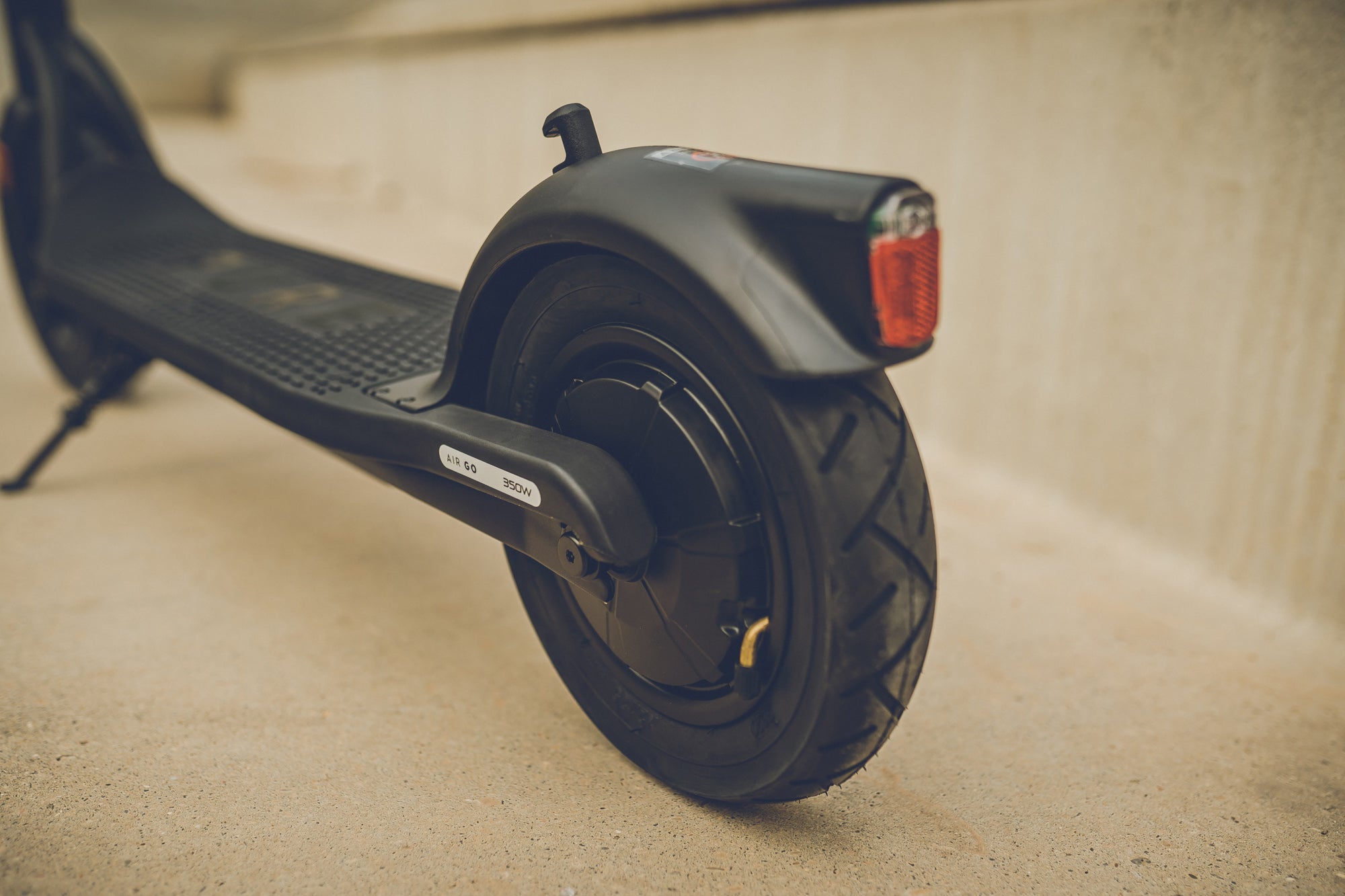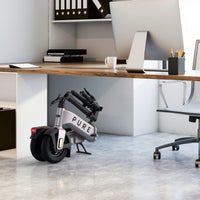
Six reasons why you need to maintain your tyre pressures
One of the most important parts of your e-bike or e-scooter – your tyres – are often overlooked and forgotten about. After all, if they’re not punctured and you can ride on them, why worry about them?
As tyres are the only contact point between you and the ground, this means that they’re fundamentally important to your safety as well as to the performance of your e-bike or e-scooter. Plus, while air-filled tyres might require a little more maintenance, the benefits in ride quality, such as easier handling and better grip and safety, make them an attractive solution for many e-scooter owners.
With this in mind, if you have air-filled tyres, here are six reasons why you should take care of your pressures.
1. Puncture resistance
When using air-filled tyres, it’s important to make sure that they’re kept pumped up to recommended levels to help avoid punctures. If tyres are allowed to run at too low pressures, they compress more, widening the surface area in contact with the ground.
This increase in surface area raises the chance of picking up a puncture from a sharp object, while the tyre can more easily deform if you ride into a hard object, like a kerb. In this case, low pressure can result in a pinch puncture (also known as a ‘snakebite’), where the tyre compresses down onto the tube, literally pinching it between the hard impact object and wheel rims.
Want to add an extra layer of puncture resistance to your ride? Check out why puncture protection fluid could be for you.
2. Optimal grip
One of the fundamental reasons for having tyres on an e-scooter or e-bike is to provide grip, so that your ride experience is as safe and enjoyable as possible. Ensuring that they’re regularly pumped up to recommended levels will mean that you get more predictable, safer levels of grip.
Although an increased surface area from running lower tyre pressures could give more grip in certain circumstances (such as loose, off-road surfaces), tyres are generally designed to work at their best in conditions that they’re primarily designed for, with the recommended levels of pressure.
3. Greater potential range
Alongside providing optimal grip and puncture resistance, running tyres at recommended pressures also results in reduced friction (also known as rolling resistance). When it comes to e-bikes, this matters because it reduces the effort that you need to put in to go the speed you want to.
For e-scooters, the benefits are even clearer: because they operate using only a motor and battery to move you, you’re relying on them completely. So, saving battery power naturally will raise the potential range of your e-scooter, while as an added bonus the motor won’t need to work quite so hard, potentially saving some wear and tear too.
4. Easier ride
Air-filled tyres (tubed or tubeless) offer much improved ride quality and comfort compared to solid tyres. The natural cushioning and deflection that properly inflated tyres provide enables you to ride over obstacles like rough surfaces, bumps and gaps with greater ease.
Too much pressure can result in a hard ride (more similar to a solid tyres) as well as pressure spikes which may cause a tube or tyre blowout. Too little pressure may result in rims ‘bottoming out’ on the ground thanks to the lack of support, which again results in a rough experience – in addition to the increased risk of punctures.
5. Longer tyre life
We know that a reduced chance of punctures will mean that you won’t need to replace tyres (and tubes) as often, but ensuring that tyre pressures are maintained will also reduce wear on the outside rubber too, increasing the potential lifespan of your tyres.
Once again, low tyre pressures are the main cause of increased wear – an increased surface area, plus the added side effects of excess tyre deflection and sideways deformation under cornering, causes more rubber to be worn away.
6. Fewer replacements
Changing your tyres can be a real pain, having to remove old and refit new tyres can temporarily put a stop to your e-bike or e-scooter riding. This is especially true of e-scooters, where smaller tyres are notoriously difficult to replace.
But, running tyres at recommended pressures can help stave this off. All of the points above contribute to a reduced risk of tyre failure (whether that’s through a large puncture or high wear), meaning that you won’t need to replace your tyres as often.






